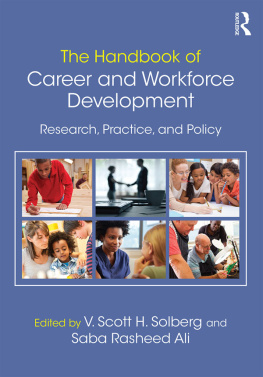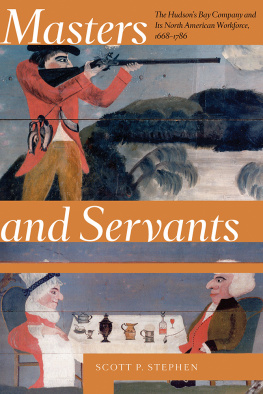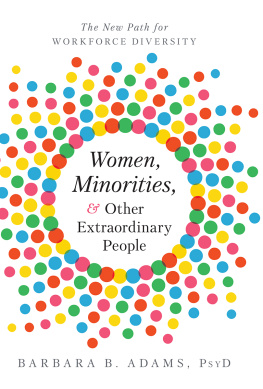Chaunda L. Scott - Diversity in the Workforce: Current Issues and Emerging Trends
Here you can read online Chaunda L. Scott - Diversity in the Workforce: Current Issues and Emerging Trends full text of the book (entire story) in english for free. Download pdf and epub, get meaning, cover and reviews about this ebook. publisher: Routledge, genre: Business. Description of the work, (preface) as well as reviews are available. Best literature library LitArk.com created for fans of good reading and offers a wide selection of genres:
Romance novel
Science fiction
Adventure
Detective
Science
History
Home and family
Prose
Art
Politics
Computer
Non-fiction
Religion
Business
Children
Humor
Choose a favorite category and find really read worthwhile books. Enjoy immersion in the world of imagination, feel the emotions of the characters or learn something new for yourself, make an fascinating discovery.
- Book:Diversity in the Workforce: Current Issues and Emerging Trends
- Author:
- Publisher:Routledge
- Genre:
- Rating:3 / 5
- Favourites:Add to favourites
- Your mark:
- 60
- 1
- 2
- 3
- 4
- 5
Diversity in the Workforce: Current Issues and Emerging Trends: summary, description and annotation
We offer to read an annotation, description, summary or preface (depends on what the author of the book "Diversity in the Workforce: Current Issues and Emerging Trends" wrote himself). If you haven't found the necessary information about the book — write in the comments, we will try to find it.
Diversity in the Workforce: Current Issues and Emerging Trends — read online for free the complete book (whole text) full work
Below is the text of the book, divided by pages. System saving the place of the last page read, allows you to conveniently read the book "Diversity in the Workforce: Current Issues and Emerging Trends" online for free, without having to search again every time where you left off. Put a bookmark, and you can go to the page where you finished reading at any time.
Font size:
Interval:
Bookmark:
Historical Perspectives for Studying Diversity in the Workforce
Chaunda L. Scott
This chapter begins by presenting the learning objectives, the meaning of diversity in the workforce/workforce diversity, diversity, human diversity and a definition of what workforce diversity is not. The importance of knowing the history of human diversity and workforce diversity in the United States will also be discussed, followed by a summary of five key government legislations that have helped to shape and govern the field of workforce diversity. Next, a brief history of human diversity and workforce diversity in the United States will be highlighted, trailed by a summation of the types of organizations in the United States that have emerged as they relate to managing a diverse workforce. Several examples will be shared underscoring the impact that Affirmative Action and Civil Rights laws have had on advancing equal opportunities for minorities and women in the United States. concludes by highlighting the chapter summary, definitions of key terms, and critical-thinking discussion questions. Note: the terms diversity in the workforce and workforce diversity will be used interchangeably throughout this chapter.
After reading this chapter, along with completing the chapter summary questions and the case discussion questions, you will be able to:
- Define diversity in the workforce/workforce diversity, diversity, human diversity, and what workforce diversity is not
- Explain the reasons why it is important to know the history of human diversity and workforce diversity in the United States
- Describe key historical government legislations that have helped shape the practice of workforce diversity and direct related human resource development and human resource management decision making and policy
- Explain how the histories of human diversity and workforce diversity have influenced the practice of workforce diversity to date
- Describe the dynamics and dimensions of monolithic, plural, and multicultural organizations
- Explain the ways in which equal opportunities for minorities and women have improved, remained unchanged, or declined in the Unites States since the Affirmative Action and Civil Rights eras
- Describe The Trends in the Mandating, Managing, and Leveraging Diversity in the Workforce Framework 19542014 by Scott (2014)
- Explain why students and practitioners in the 21st century should study the practice of workforce diversity
In the United States, what do the terms diversity in the workforce and workforce diversity suggest? Do they just mean hiring qualified men and women in the workplace who represent different races, ages, ethnicities and, sexual orientations? Well the answer to this questions is no , because workforce diversity is not just about the above-mentioned physical characteristics and individualities in the workplace. It is much more than this. However, unfortunately, this is what many people believe workforce diversity represents.
To provide a clearer understanding of what diversity in the work-force in the United States symbolizes, this chapter describes workforce diversity as valuing the myriad of ways that leaders, business partners, employees, consultants, student workers, volunteers, customers, and visitor groups are commonly viewed as being similar and dissimilar to one another in work environments (Scott, 2012). For example, these characteristics include but are not restricted to gender; race; skin color; age; ethnicity; sexual orientation; marital status; partner status; parental status; maternal status; socioeconomic status; dialect; disability; spiritual beliefs; religious beliefs; ancestry; cultural customs, norms, and traditions; choices of cuisine; eye color; hair color and texture; style of dress; professional appearance; height and weight; educational level; professional work experience; military experience; world view; personality; knowledge, skills, and abilities; work ethic; creative talents; demeanor; mannerisms; professionalism; adaptability to change; handling stress; managing conflict; dealing with emotions; leadership style; followership style; occupation titles; occupation responsibilities; weekly schedules; seniority level; salary level; functioning in teams; functioning autonomously; cultivating a welcoming work environment; level of personal commitment; degree of professional loyalty; providing feedback; receiving feedback; delivering customer service; receiving customer service; expressing appreciation; conveying disapproval; professional interest; personal interests; life experiences; where one lives; birth place; style of living; and political views (Scott, 2012).
As shown by the extensive, and yet evolving, list of similar and dissimilar characteristics presented above, the construct of workforce diversity is one that is wide-ranging in its approach in that it acknowledges not only numerous human ways of being in work environments, but also numerous human ways of knowing, behaving, and communicating in the workforce simultaneously. The descriptive terms similar and dissimilar also play an instrumental role in the definitions of workforce diversity in that they shift the focus from just being on individual differences to include the variety of ways individuals are alike in work settings. The definitions of diversity and human diversity likewise follow the same format in that they too focus on the countless ways human beings are similar as well as dissimilar from one another throughout the world (Scott, 2012).
Moreover, by distinguishing the individuals in the workforce by their occupational and nonoccupational roles in the definition of workforce rather than just by the single term individuals more clearly helps us to better understand the types of roles that individuals from a variety of diverse backgrounds perform in the workforce. Thus, relieving the readers of this chapter in speculating what these roles are.
According to ASME Professional Practice Curriculum (n.d.), workforce diversity is not: (1) an affirmative action strategy; (2) a quota system aimed at hiring a certain number of qualified minorities and women in organization; or (3) a lack of professional standards in the workforce because qualified minorities and women are represented at all levels of the organization. Therefore, by having a clearer understanding of what workforce diversity is, and is not, in both theory and practice, new insights are offered for advancing workforce diversity in the 21st century, specifically in the areas of leadership, research and measurement, education, alignment of management systems, and follow-up (Cox, 2001, p. 19).
At present, the relatively young and evolving field of workforce diversity in the United States is a popular area of study in a variety of professional disciplines, which include human resource development, training and development, human resource management, organizational leadership, workforce education and development, entrepreneurship, counseling, military education, adult education, and educational leadership, to name a few. It is also an area of study that continues to prosper and be recognized as one of the core guiding principles in many types of organizational settings, e.g., fortune 500 corporations, for-profit and nonprofit agencies, mid-size companies, small businesses, institutions of higher education, and K12 academies.
Yet, in spite of these affirmations, less emphasis has been placed on connecting it to the history of diversity and workforce diversity in the United States. This is mainly because much of the literature available on human diversity and workforce diversity (e.g., in textbooks, mainstream books, films, and articles) is being presented from a modern-day perspective, with little or no mention of their connection to their historical beginnings.
Font size:
Interval:
Bookmark:
Similar books «Diversity in the Workforce: Current Issues and Emerging Trends»
Look at similar books to Diversity in the Workforce: Current Issues and Emerging Trends. We have selected literature similar in name and meaning in the hope of providing readers with more options to find new, interesting, not yet read works.
Discussion, reviews of the book Diversity in the Workforce: Current Issues and Emerging Trends and just readers' own opinions. Leave your comments, write what you think about the work, its meaning or the main characters. Specify what exactly you liked and what you didn't like, and why you think so.





